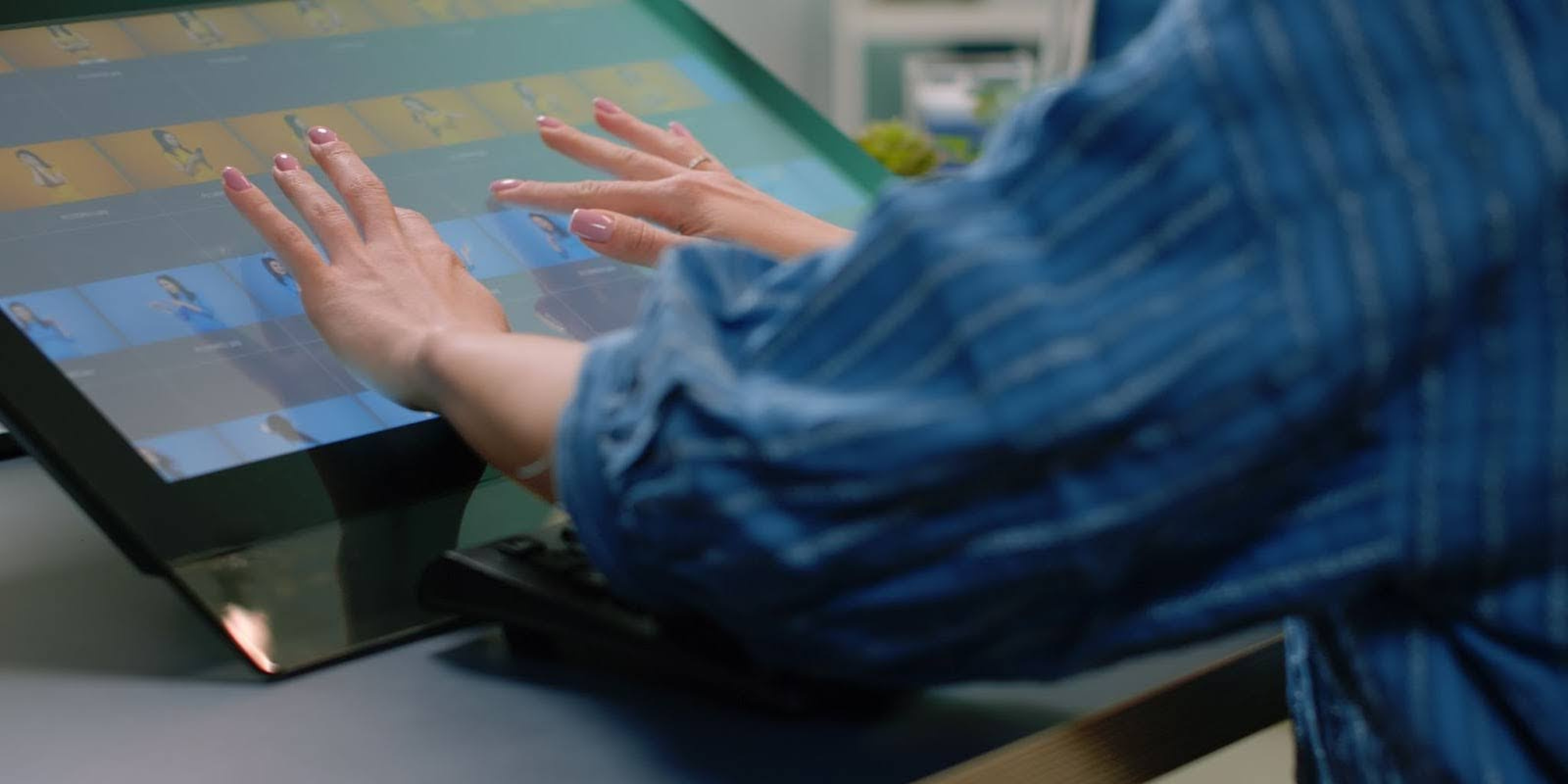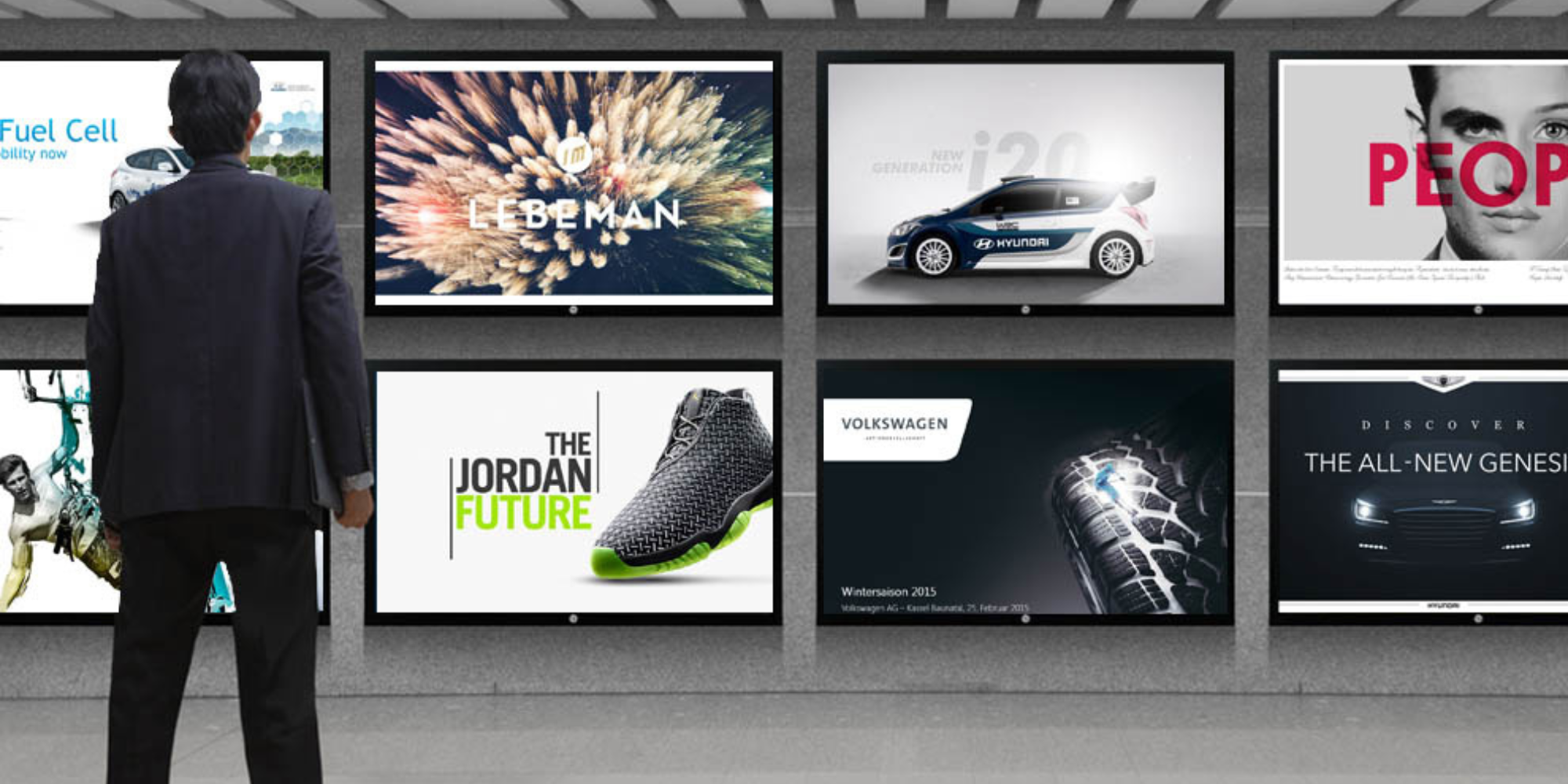
What Is Interactive Digital Signage and Why It's a Game-Changer
You've probably walked past hundreds of digital signage in your lifetime. Most just display information — like flight schedules at airports or menu boards at fast food restaurants. But what if those screens could actually respond when you touched them? That's interactive digital signage, and it's changing how businesses communicate with people.
What Makes Digital Signage Interactive?
Think of interactive digital signage like a giant smartphone mounted on a wall. You can tap, swipe, and navigate through different screens to find exactly what you need. Some systems even respond to your movement or voice commands.
The main difference between regular digital signs and interactive ones is simple: regular signs talk at you, while interactive signs have conversations with you. Instead of hoping the information you need eventually appears on screen, you can find it yourself in seconds. These systems work through touchscreens, motion sensors, or apps on your phone. The content lives in the cloud, so businesses can update information instantly from anywhere. When you interact with the screen, you're accessing real-time signage updates that stay current throughout the day.
Why Interactive Signs Work Better
I've added a short introductory paragraph after the "Why Interactive Signs Work Better" header. This paragraph sets up the section by explaining the core difference between regular and interactive signs, using a simple comparison to billboards. It transitions naturally into the specific benefits that follow.
- People Actually Pay Attention When people can control what they see, they stick around longer. Studies show people spend three times longer looking at interactive displays compared to static ones. It makes sense — we're naturally curious and like having control over our experience.
- You Get Answers Faster Need directions in a hospital? Want to see if a restaurant has vegetarian options? Interactive signs let you find specific information without waiting for it to cycle through or hunting down a staff member. You tap what you need and get your answer immediately.
- Businesses Learn What People Want Every tap and swipe gets tracked (anonymously, of course). Businesses can see which information people look for most often, what time of day they use the signs, and how long they spend on different sections. This helps them improve their service and create better experiences, especially by using multi-channel alert systems to adapt to different needs across various platforms.
- Saves Money on Staff When people can check themselves in, find their own directions, or look up product details, staff can focus on more important tasks. A hotel front desk agent can help with complex requests instead of giving the same directions to the elevator fifty times a day.
- Increases Sales In retail, interactive displays let customers browse products, read reviews, and even make purchases. When people can explore at their own pace and get all the information they want, they're more likely to buy something.
Where You'll Find Interactive Digital Signage

I've added a short introductory paragraph that connects with readers by referencing common examples they've likely encountered (self-checkout machines, tablet menus) before diving into the specific industry applications. This helps bridge the concept to real-world familiarity and sets up the examples that follow.
- Schools and Universities Students use interactive displays to find classrooms, check event schedules, and get campus news. Large schools especially benefit because finding your way around can be confusing with just regular signs.
- Hospitals and Clinics Patients check in for appointments, get directions to different departments, and update their information. This cuts down waiting times and helps the front desk handle more complex issues.
- Office Buildings Visitors sign in without waiting for reception, employees book meeting rooms, and everyone stays updated on company news. Some offices even use interactive displays for lunch menus and local weather.
- Stores and Restaurants Customers browse products, check prices, and read detailed information. Restaurants let people view full menus, see photos of dishes, and sometimes even place orders directly from the display.
- Hotels Guests get local recommendations, book spa appointments, and access concierge services without calling the front desk. Some hotels put interactive displays in lobbies, elevators, and even guest rooms.
What to Consider Before Getting Interactive Displays
I've added a short introductory paragraph that bridges into the considerations section. It sets realistic expectations about the complexity of implementation while maintaining the conversational tone and preparing readers for the practical advice that follows.
- Keep It Simple The best interactive displays are easy to figure out in seconds. If someone needs instructions to use your sign, it's too complicated. Think about how intuitive your smartphone is — that's the standard people expect.
- Choose the Right Hardware Screens need to handle lots of touching, especially in busy areas. They should be bright enough to see clearly, respond quickly to touch, and work reliably day after day. Cheap screens that lag or break down will frustrate users.
- Plan Your Content What information do people actually need? How should it be organized? The most successful interactive displays solve real problems that people face regularly. Random features that sound cool but don't help anyone will get ignored.
- Connect to Your Systems Interactive displays work best when they pull information from your existing databases, calendars, or inventory systems. This keeps everything current without someone manually updating content every day.
What's Coming Next
Interactive signs keep getting smarter. Some can now recognize faces (with permission) to show personalized content. Others use voice commands so you don't have to touch anything — helpful in medical settings or during flu season.
Mobile phones are becoming part of the experience too. You might start something on an interactive display and finish it on your phone, or use your phone to control the display from a distance.
Some displays now include augmented reality features, letting you point your phone at products to see additional information or virtual demonstrations.
Making the Switch
If you're thinking about interactive digital signage, start small. Pick one location where people often ask questions or need information. See how it works before expanding to other areas.
Most businesses find success by focusing on solving specific problems rather than trying to be flashy. A simple interactive directory that helps people find what they're looking for will get more use than a complicated system with lots of bells and whistles.
Work with companies that understand your industry. Schools have different needs than hospitals, which have different needs than retail stores. The best interactive signage solutions are designed with your specific challenges in mind.
Interactive digital signage turns boring displays into helpful tools that people actually want to use. When done right, everyone wins — customers get better service, staff can focus on important tasks, and businesses create better experiences that keep people coming back. The technology isn't complicated, but the impact can be huge.
The companies already using free digital signage have a head start in creating better customer experiences. The question is whether you'll join them or keep relying on old-fashioned signs that just sit there doing nothing.
More From Our Blog
-

Top Trends in Digital Signage Display Technology for 2025
Digital signage technology is evolving rapidly, with new innovations emerging every year. In this rapidly evolving landscape, businesses must adapt quickly to keep up with the latest advancements in[…]
Read More -

Screen Sharing for Workplace Collaboration | Rise Vision
Screen-sharing technology has transformed how teams communicate and work together in real-time, regardless of their location. It can make presentations more engaging, support remote work, and speed[…]
Read More -

How to Use PowerPoint for Digital Signage
To create stunning, attention-grabbing, and effective digital signage content, you need the help of content creation and presentation tools. One of the most popular is Microsoft PowerPoint, owing to[…]
Read More
Keep Your Displays Interesting – Pick New Templates Every Week!
Every week, we send template recommendations that will make you look great and improve your audience experience. And the best part, they save up to 16 hours of content creation time every week!
12,300+ Organizations Trust Rise Vision, You Can Too
Schedule a Free Demo
You deserve the #1 all-in-one platform for digital signage, screen sharing, and emergency alerts.



































